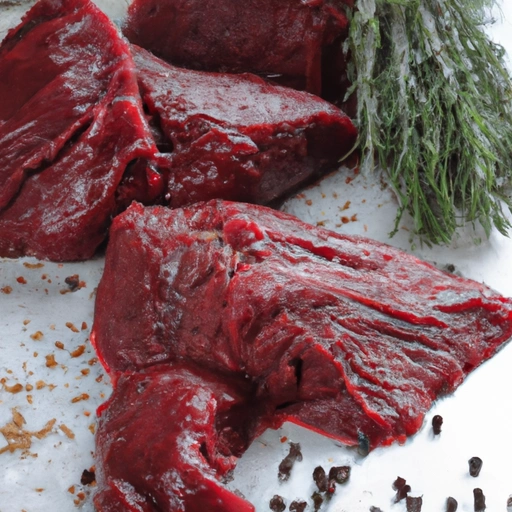Venison
Description

Venison is the culinary term for deer meat, though it can also refer to meat from other game animals such as elk, moose, and antelope. It is a highly valued and nutritious type of red meat known for its rich, gamey flavor and tender texture when cooked properly. Venison can be incorporated into a wide variety of dishes and is cherished by food enthusiasts both for its taste and its status as a sustainable, wild-caught source of protein.
Common uses
Venison is used in various ways, from simple grilling to complex stews and sauces. It's a versatile ingredient that can replace beef or other red meats in most recipes, providing a distinct and often more complex flavor profile. Common preparations include venison steaks, roasts, sausages, and ground meat for burgers and meatballs.
Nutritional value
Calories
On average, a 3-ounce (85 grams) serving of cooked venison contains about 128 calories.
Protein
This same serving size offers about 26 grams of high-quality protein, making it an excellent source for muscle building and repair.
Fat
Venison is leaner than many other red meats, with around 2 grams of fat per serving, which includes a mix of beneficial monounsaturated fats and less desirable saturated fats.
Carbohydrates
Venison contains no carbohydrates, making it suitable for low-carb diets.
Vitamins
It's a good source of B vitamins, particularly vitamin B12, which is crucial for nerve health and blood formation.
Minerals
Venison provides essential minerals such as zinc for immune support and iron for oxygen transport in the blood.
Health benefits
Consuming venison can offer numerous health benefits due to its high protein content and low-fat profile. Its rich supply of B vitamins helps maintain energy levels and supports a healthy metabolism, while its iron content is beneficial for those at risk of anemia. The presence of zinc contributes to a robust immune system, and the overall lean nature of venison can support weight management as part of a balanced diet.
Potential risks
While venison is generally considered healthy, it can pose risks if not handled or cooked properly. Wild game is more susceptible to contamination with pathogens or environmental toxins. It's important to ensure venison is sourced from reputable suppliers and cooked to safe internal temperatures to minimize health risks.
Common recipes
Popular recipes featuring venison include venison chili, venison stew, venison burgers, and venison jerky. It can also be found in traditional European dishes such as venison goulash and roasted venison with juniper berries.
Cooking methods
Venison can be cooked using methods such as roasting, grilling, braising, or slow-cooking. It's important to avoid overcooking to prevent the meat from becoming tough and dry.
Pairing with other ingredients
Venison pairs well with bold flavors and seasonal ingredients, such as juniper berries, rosemary, and red wine sauces. It also complements earthy vegetables like mushrooms and root vegetables.
Summary
Venison is a flavorful and nutritious game meat that offers a less common alternative to traditional red meats. Its rich historical significance and culinary flexibility make it a valuable ingredient for both traditional and innovative dishes. With its health benefits and unique taste, venison continues to be enjoyed by food lovers across the globe.